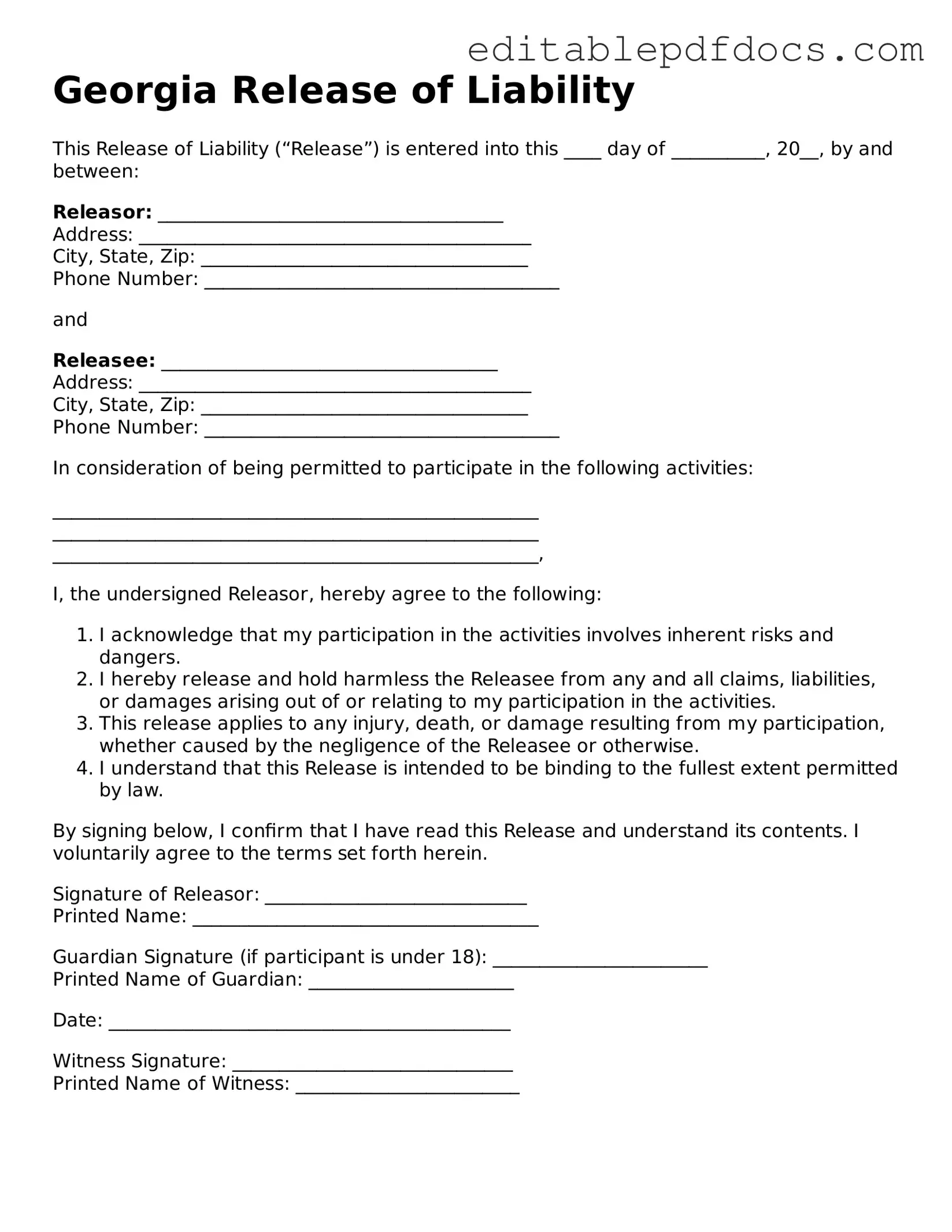Filling out the Georgia Release of Liability form can seem straightforward, but many individuals make common mistakes that can lead to complications later on. One frequent error is neglecting to read the entire document before signing. Understanding the terms and conditions is crucial, as it ensures that individuals are fully aware of their rights and responsibilities.
Another mistake is failing to provide complete and accurate information. Omissions or inaccuracies in personal details, such as names or addresses, can render the form invalid. It is essential to double-check all entries to ensure they are correct and up to date.
Many people also overlook the importance of understanding the scope of the release. They may sign without realizing what activities or incidents they are waiving their rights to claim against. Clarity about what is being released is vital for informed consent.
Additionally, individuals often forget to date the form. A missing date can create confusion about when the release was executed, potentially leading to disputes over its validity. Always include the date to avoid such issues.
Another common pitfall is not having the form witnessed or notarized when required. Some situations may necessitate a witness to ensure that the release is legally binding. Skipping this step can undermine the form's enforceability.
People sometimes fail to read the fine print. Important details regarding limitations and exclusions may be buried in the text. Ignoring these sections can lead to misunderstandings about what rights are being waived.
In some cases, individuals may sign the form under duress or without fully understanding what they are agreeing to. It is crucial to ensure that consent is given freely and with a clear understanding of the implications.
Many also forget to keep a copy of the signed form for their records. Without a copy, individuals may find themselves without proof of the agreement should a dispute arise in the future.
Finally, some people may use outdated versions of the form. Laws and regulations can change, and using an old form may not provide the intended legal protection. Always ensure that the most current version is being used.
By being aware of these common mistakes, individuals can better navigate the process of completing a Georgia Release of Liability form. Taking the time to carefully review and understand the document can prevent potential legal issues down the line.
